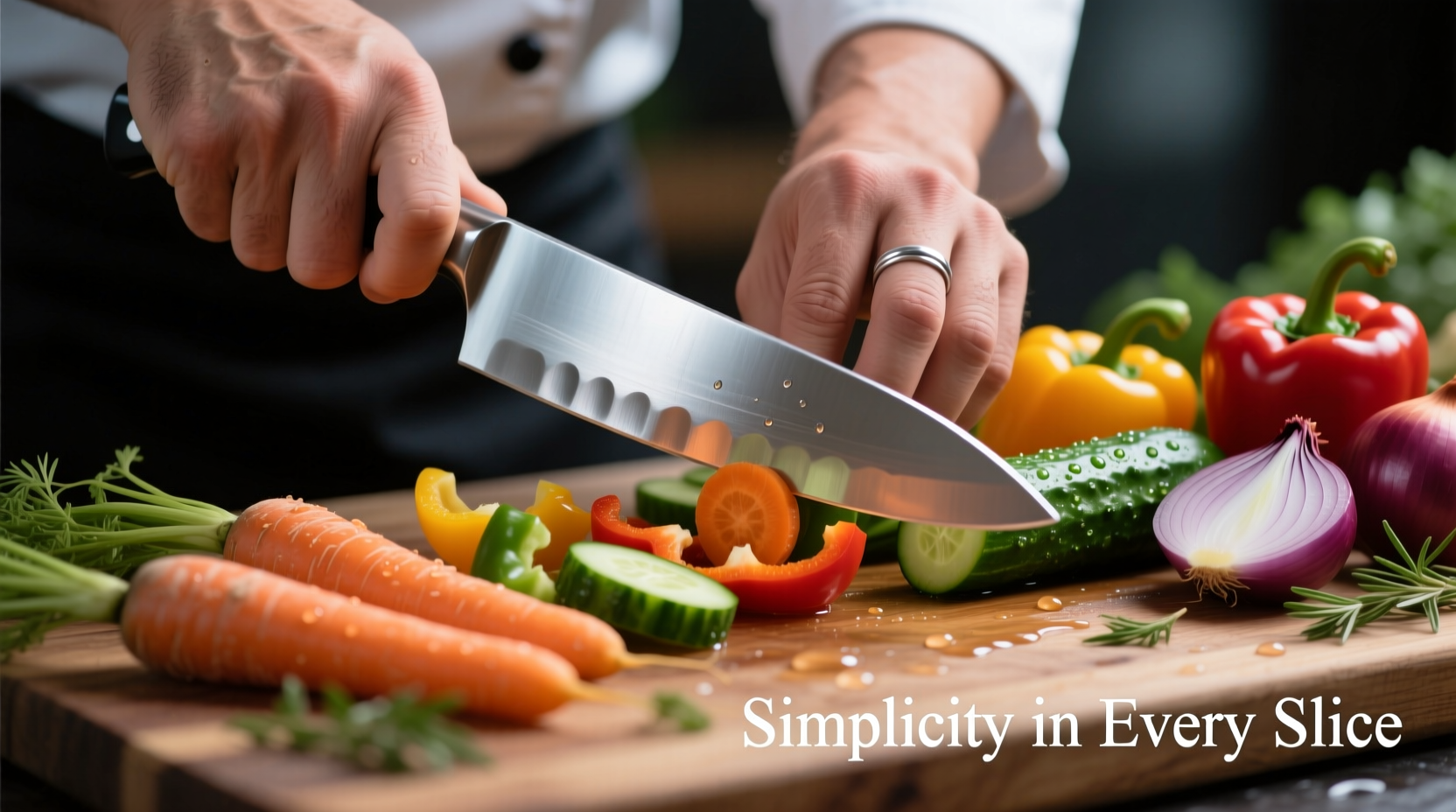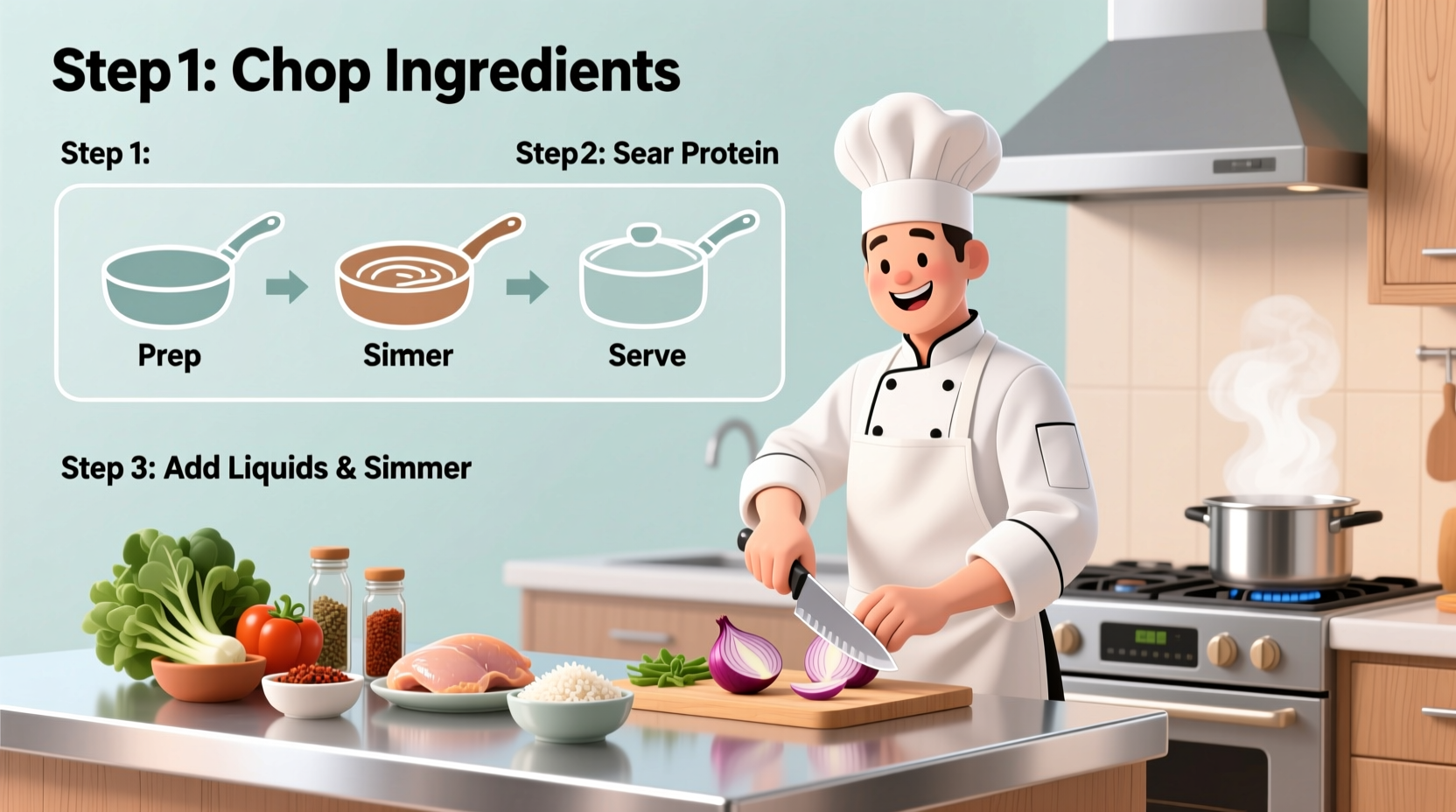Your First Steps to Becoming a Confident Cook
Learning how to cook transforms your relationship with food, saves money, and creates opportunities for creativity. Whether you're a complete beginner or someone who's burned toast more times than you'd like to admit, this guide provides the exact roadmap you need. Forget complicated culinary jargon—we focus on practical, actionable steps that deliver results from your very first meal.
| Cooking Skill | Beginner Timeline | Confidence Indicator |
|---|---|---|
| Knife Skills | 2-4 weeks | Consistent vegetable sizes |
| Heat Control | 3-6 weeks | No burnt pans |
| Seasoning Balance | 4-8 weeks | Friends ask for your recipes |
| Recipe Adaptation | 8-12 weeks | Creating your own variations |
Essential Kitchen Tools You Actually Need
Starting your cooking journey doesn't require expensive equipment. Focus on these five essentials from the USDA Food Safety and Inspection Service recommendations:
- 8-inch chef's knife - Your most important tool for precise cutting
- Non-stick skillet - Versatile for eggs, proteins, and vegetables
- Cast iron pan - Builds flavor over time and handles high heat
- Microplane grater - For zesting citrus and grating garlic
- Digital thermometer - Ensures proteins reach safe internal temperatures
Professional chefs at the Culinary Institute of America emphasize that proper tool maintenance matters more than quantity. Keep your knives sharp and pans well-seasoned for better cooking results.

Master These 4 Fundamental Cooking Techniques
Before tackling complex recipes, build confidence with these foundational methods:
Sautéing: Your Everyday Cooking Workhorse
Heat 1-2 tablespoons of oil in a skillet over medium heat until shimmering. Add ingredients in a single layer without crowding. Cook undisturbed for 2-3 minutes until golden before stirring. This technique works best for vegetables, proteins, and aromatics. Remember: if smoke appears, your pan is too hot.
Simmering: The Secret to Flavor Development
Maintain liquid just below boiling point (180-200°F) with small bubbles occasionally breaking the surface. This gentle cooking method extracts flavors without breaking down ingredients. Perfect for soups, sauces, and braises. The USDA National Nutrient Database confirms simmering preserves more nutrients than boiling.
Roasting: Hands-Off Flavor Enhancement
Preheat oven to 400°F. Toss vegetables with oil and seasonings. Spread in a single layer on a baking sheet. Roast until tender and caramelized, flipping halfway. This dry-heat method concentrates natural sugars—ideal for root vegetables, proteins, and whole chickens.
Emulsifying: Creating Stable Sauces
Combine fat and liquid gradually while whisking vigorously. Start with small amounts of oil added to vinegar or lemon juice. This technique creates stable mixtures like vinaigrettes and mayonnaise. When learning how to cook sauces, remember temperature matters—cold ingredients emulsify better.
Avoid These 5 Common Beginner Mistakes
Understanding cooking limitations prevents frustration. Based on research from culinary education programs, these context boundaries trip up most beginners:
- Salt timing - Add salt early for even distribution in long-cooked dishes, but wait until the end for quick sautés
- Protein crowding - Overfilling pans lowers temperature and causes steaming instead of searing
- Recipe rigidity - Treat recipes as starting points, not strict rules—learn to adjust based on ingredient quality
- Knife grip - Hold the blade, not the handle, for better control and safety
- Taste testing - Sample throughout cooking, not just at the end, to adjust seasoning properly
Build Confidence with These Starter Recipes
Begin with these simple dishes that teach multiple techniques simultaneously:
Perfect Scrambled Eggs
Whisk 2 eggs with 1 tablespoon milk. Cook over low heat in buttered pan, stirring constantly with a silicone spatula. Remove from heat just before fully set—residual heat finishes cooking. This teaches heat control and timing.
One-Pan Chicken and Vegetables
Season chicken thighs with salt and pepper. Sear skin-side down in hot oven-safe skillet until golden. Add chopped vegetables (carrots, potatoes, onions) to pan. Roast at 400°F for 25 minutes. Demonstrates searing, roasting, and timing multiple components.
Basic Tomato Sauce
Sauté garlic in olive oil until fragrant. Add canned tomatoes, salt, and dried herbs. Simmer 20 minutes. Blend for smooth texture. Teaches flavor development through simmering and balancing acidity.
Develop Your Palate and Confidence
Cooking proficiency grows through deliberate practice. Follow this progression:
- Weeks 1-2: Master one technique per meal (e.g., perfect scrambled eggs)
- Weeks 3-4: Combine two techniques (e.g., sear protein then roast vegetables)
- Weeks 5-6: Adjust recipes based on taste (increase acid if flat, add salt if bland)
- Weeks 7-8: Create simple variations (substitute herbs, change protein)
Research from the University of Minnesota Extension shows that tasting ingredients separately builds flavor recognition. Keep a small notebook to track what works and what doesn't—your personal cooking reference.
Your Cooking Journey Starts Today
Learning how to cook successfully begins with managing expectations. Your first meals won't be restaurant-quality, and that's perfectly normal. Focus on incremental improvement rather than perfection. Start with one simple recipe this week, practice the techniques, and build from there. Remember: every professional chef started exactly where you are now. The most important ingredient isn't listed in any recipe—it's your willingness to try.











 浙公网安备
33010002000092号
浙公网安备
33010002000092号 浙B2-20120091-4
浙B2-20120091-4